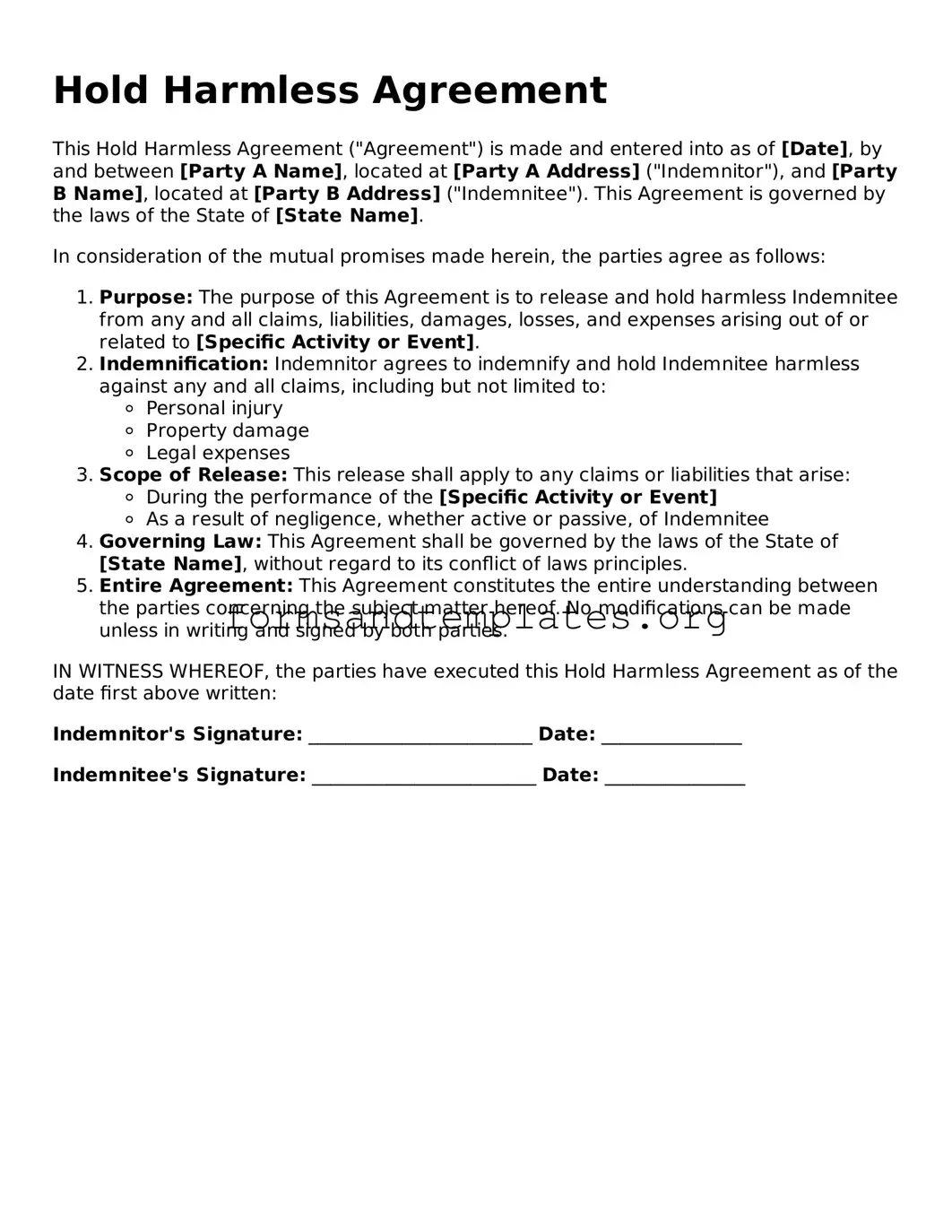Hold Harmless Agreement
This Hold Harmless Agreement ("Agreement") is made and entered into as of [Date], by and between [Party A Name], located at [Party A Address] ("Indemnitor"), and [Party B Name], located at [Party B Address] ("Indemnitee"). This Agreement is governed by the laws of the State of [State Name].
In consideration of the mutual promises made herein, the parties agree as follows:
- Purpose: The purpose of this Agreement is to release and hold harmless Indemnitee from any and all claims, liabilities, damages, losses, and expenses arising out of or related to [Specific Activity or Event].
- Indemnification: Indemnitor agrees to indemnify and hold Indemnitee harmless against any and all claims, including but not limited to:
- Personal injury
- Property damage
- Legal expenses
- Scope of Release: This release shall apply to any claims or liabilities that arise:
- During the performance of the [Specific Activity or Event]
- As a result of negligence, whether active or passive, of Indemnitee
- Governing Law: This Agreement shall be governed by the laws of the State of [State Name], without regard to its conflict of laws principles.
- Entire Agreement: This Agreement constitutes the entire understanding between the parties concerning the subject matter hereof. No modifications can be made unless in writing and signed by both parties.
IN WITNESS WHEREOF, the parties have executed this Hold Harmless Agreement as of the date first above written:
Indemnitor's Signature: ________________________ Date: _______________
Indemnitee's Signature: ________________________ Date: _______________
